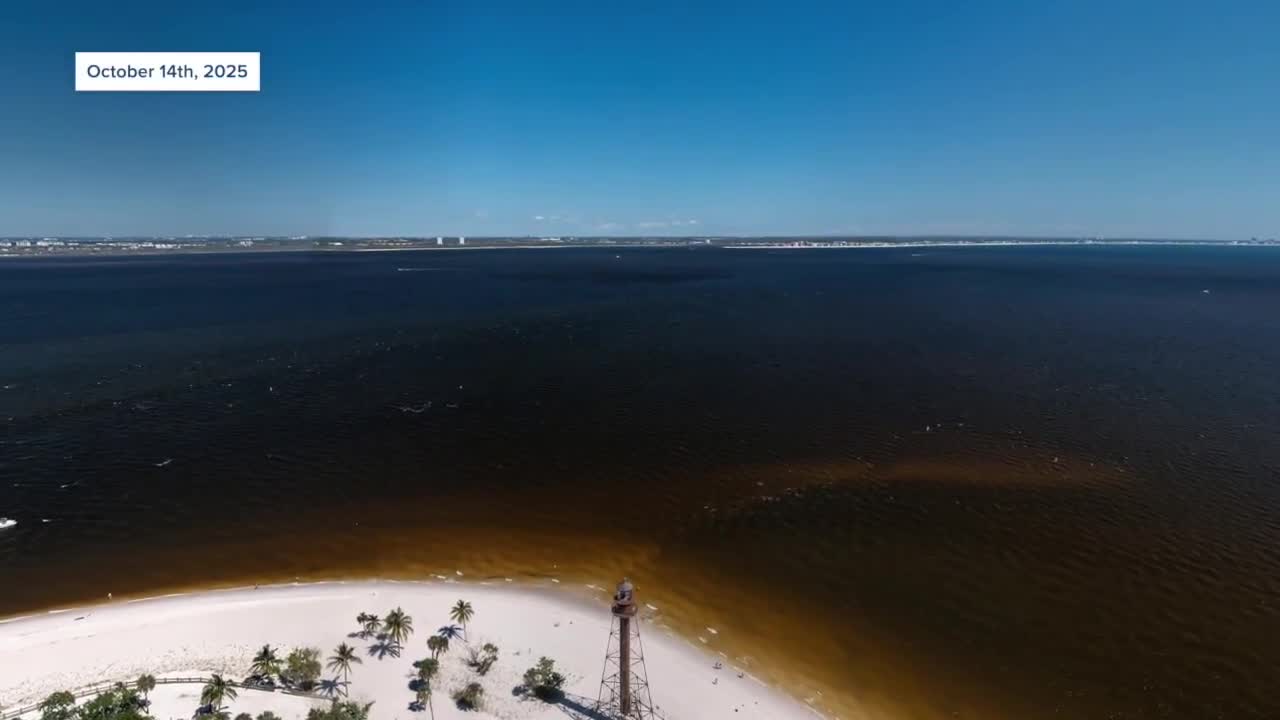SANIBEL, Fla. — Have you ever been on the water and wondered why it's brown? The answer lies in color-dissolved organic matter in the water, which is seasonal and creates a striking visual divide between muddy-looking brown water and the teal, deep blue water of the Gulf.
WATCH: Fox 4 spoke to a marine biologist who explains how this happens:
This phenomenon occurs when fresh water from the Caloosahatchee River mixes with salt water from the Gulf of Mexico. As the water flows, it picks up organic materials that change its color. Although it may look ugly, it's actually an important indicator of the amount of mixing of freshwater and marine water in the estuary.

Eric Milebrandt, a marine biologist, compared the mixing of water to making a giant cup of tea. The appearance depends entirely on rainfall amounts, so the water can look different from week to week.
"So it's a mixture of a lot of different things but mostly comes from decomposing leaves, from soils, after water runs through the soils or runs off the soils after a rain event, it picks up things, it picks up things that are dissolved in the water and turns the water brown," Milebrandt said.

The flowing water picks up organic matter in the tide, which creates the color change visible from aerial views. The color is directly correlated to how much rain we get and it can change rapidly. The two photos below were taken exactly 7 days apart.
October 14th, 2025:

October 20th, 2025:

The water doesn't pose a danger to marine life unless it reaches extreme levels for extended periods, which Milebrandt says hasn't happened much this season. The water remains safe for swimming, though it may appear more murky during your next trip to the area.




